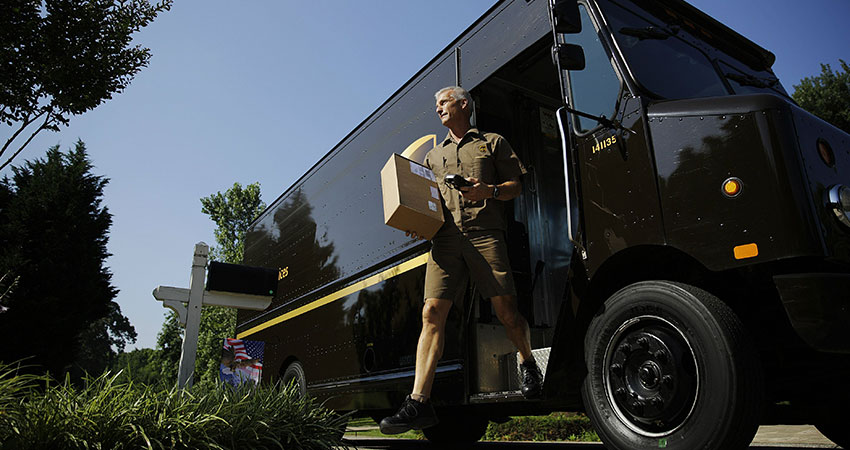UPS reported a 10.9% dip in second quarter revenue, but still hit its goal of $2.9 billion in operating profit thanks to $889 million in cost reduction compared with 2022. The company also said 1 million parcels a day were diverted to competitors due to concerns about labor negotiations.
To give an idea of the impact of Teamsters negotiations, average daily volume was down 9.9% in Q2, but down 12.2% in June alone. The volume drop continued into July, officials said.
A tentative July 25 agreement with the Teamsters has to be ratified by rank-and-file members by Aug. 22. Incredibly, there is a “vote no” movement among Teamsters who felt the deal hammered out by president Sean O’Brien and negotiators didn’t go far enough. New rules calling for a simple majority vote ratification vote would prevent O’Brien from pushing through a deal if turnout was low, as did predecessor James Hoffa Jr., in 2018.
Contract Cost Leads to Guidance Rollback
UPS also lowered full-year guidance mostly due to costs associated with the new contract, the company said. It now calls for $93 billion in revenue, down from $97 billion, and adjusted operating margin of 11.8% (12.8%). O’Brien has said the deal was worth $30 billion over the life of the contract for the union and its members.
Within consolidated revenue, the domestic package business dropped 6.9% in Q2, while international fell 13.9%. Consolidated revenue per piece increased 1.5% to $13.92, with domestic strength offsetting international weakness.
CEO Carol Tome was upbeat about the prospects of winning back lost business. She said UPS deployed 500 executives to talk to shippers during negotiations. This gave the company a better understanding of their supply chain needs, Tome said.
“We are now laser focused on executing our win-back initiatives and pulling through the more than $7 billion of opportunity in our sales pipeline,” Tome told analysts on the earnings call. “To do so, we will leverage our superior service and capability and the investments we’ve made in the digital customer experience.”
Volume Flees to Competitors, UPS Looks to Claw it Back
Tome said Q2 domestic volume was down 1.2 million parcels a day, with 1 million diverted pieces split evenly among FedEx, the U.S. Postal Service and regional carriers. Diverted volume was higher than expected due to negotiation “noise levels,” a seeming jab at fiery Teamster rhetoric and actions.
Among the tactics employed to win back business in an “all hands on deck” posture, Tome said, are the institution of a control tower to ensure returning volume is onboarded smoothly; playing up its speed advantage over competitors and its low-cost SurePost offering; expanding Saturday delivery to 890 new ZIP codes; and launching new offerings in its Deal Manger tool to win SMB accounts.
UPS CFO Brian Newman said the company pulled several cost reduction levers to get to the $889 million figure. This included reducing domestic labor hours by 10%; cutting back volume in non-automated facilities by 18%, leading to a 7% operations headcount reduction; pulling air volume into the Louisville Worldport facility; and lowering management headcount by 2,500.
Tome said UPS tapped its network planning technology tools to get to that labor hour reduction, including machine learning and AI to quickly update load planning, scheduling and volume flow to match network capacity. “In fact, NPT can do in an afternoon what used to take a team of engineers months to do,” she said.
A “Win-Win-Win” Deal
The CEO also called the contract settlement a “win-win-win” for all stakeholders, including employees, the company, customers, shareholders and the country, as UPS moves about 6% of U.S. GDP daily.
By the end of the five-year deal, Tome said, full-time drivers will earn about $170,000 annually in pay and benefits, while part-time workers will make at least $25.75 per hour with full healthcare and pension benefits.
The lure of these six-figure jobs, above industry standards, has driven a deluge of hopefuls searching for UPS job openings, even though the path there is not an easy one, as Bloomberg reported.
“For UPS, we retain the flexibility we need to take care of our customers to provide seasonal health during the holidays, and to add technology to drive productivity and efficiency,” she said. CFO Brian Newman also referred to this flexibility aspect of the deal, including seasonal hiring, without providing details.
The Teamsters most likely pushed back on UPS adding automation, which observers said they would do to offset contract costs. The specter of automation to increase productivity and lower labor dependence was also a bone of contention in talks between West Coast port owners and dock workers’ unions.

